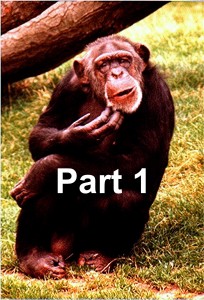“Like everything metaphysical the harmony between thought and reality is to be found in the grammar of the language.” —Ludwig Wittgenstein
Often grammar books and publishers differ in on how to handle grammar rules. Sometimes it’s hard to find the answer. (I’ve thumbed through books to see if anyone else was in my predicament.)
In a 3-part series over the next few weeks, I’ll mention acceptable ways to write some phrases that might have puzzled you. Whichever you choose, be consistent throughout your manuscript. Your publisher may have a preference.
- You want to write a sentence that trails off because the character doesn’t know a person’s surname to go with his Mr. title.
“Will you ask Mr. . . . ?” (manual ellipse; space after ellipse)
“Will you ask Mr. . . .?” (manual ellipse; no space after ellipse)
or
“Will you ask Mr. … ?” (software generated ellipse; space after ellipse)
“Will you ask Mr. …?” (software generated ellipse; no space after ellipse)
You add the period to Mr, add a space, type in an ellipse, and end with a question mark. (The Chicago Manual of Style (CMOS) shows the space between the ellipse and the question mark.)
If it isn’t a question:
“He asked Mr. . . .”
or
“He asked Mr. …”
Note: No punctuation after the ellipse in the statement case, and no space between the ellipse and the ending quotation mark.
- You want your character to scream in her mind for the man to stop prodding her with questions.
Here are acceptable cases, starting with the woman speaking aloud.
“Stop it!” (screaming aloud)
“Stop it!” she thought. (quotation marks; not in deep point of view)
She thought, stop it! (no quotation marks; not in deep point of view)
Stop it! (no italics; deep point of view – option 1)
Stop it! (italics; deep point of view – option 2)
- You want your character to exclaim something like it’s a single word with no pauses.
No comma is used. (Use commas when there’s a pause.) (CMOS)
Oh boy.
Oh no!
Oh yeah.
No no no!
- You want your character to give alternate utterances for yes and no. En dashes are used.
Yes: uh-huh
No: uh-uh
5. You want to use the word which.
Here’s how to write it under various cases. Watch for commas and no commas. (CMOS)
He didn’t know which way to go
After her blunder, her cheeks flamed, which added to her embarrassment.
He always gushed over how pretty I was. Which was a pack of lies.
He always gushed over how pretty I was—which was a pack of lies.
(The last two examples could be written as one sentence with a comma after was.)
Our family reunions were always the sort at which my cousin tortured me with snide comments.
I was stuck in a situation for which I hand no solution.
Acceptable ways to write 5 infrequent phrases – Part 1. Click to tweet.
What issue have you had a hard time finding in a grammar book?





 RSS - Posts
RSS - Posts



Enjoyed the hints and helps! Thank you, Zoe.
You’re welcome, Tanya.
The other punctuation along with the ellipses always catches me up. A lot of the space rules have changed from the old typewriter days, but I’m never sure where.
What I found in my research for this series, looking at how different publishing houses handle these “phrases,” is they have different preferences. I think as long as we’re consistent, they’re happy and the publisher expects to change these.